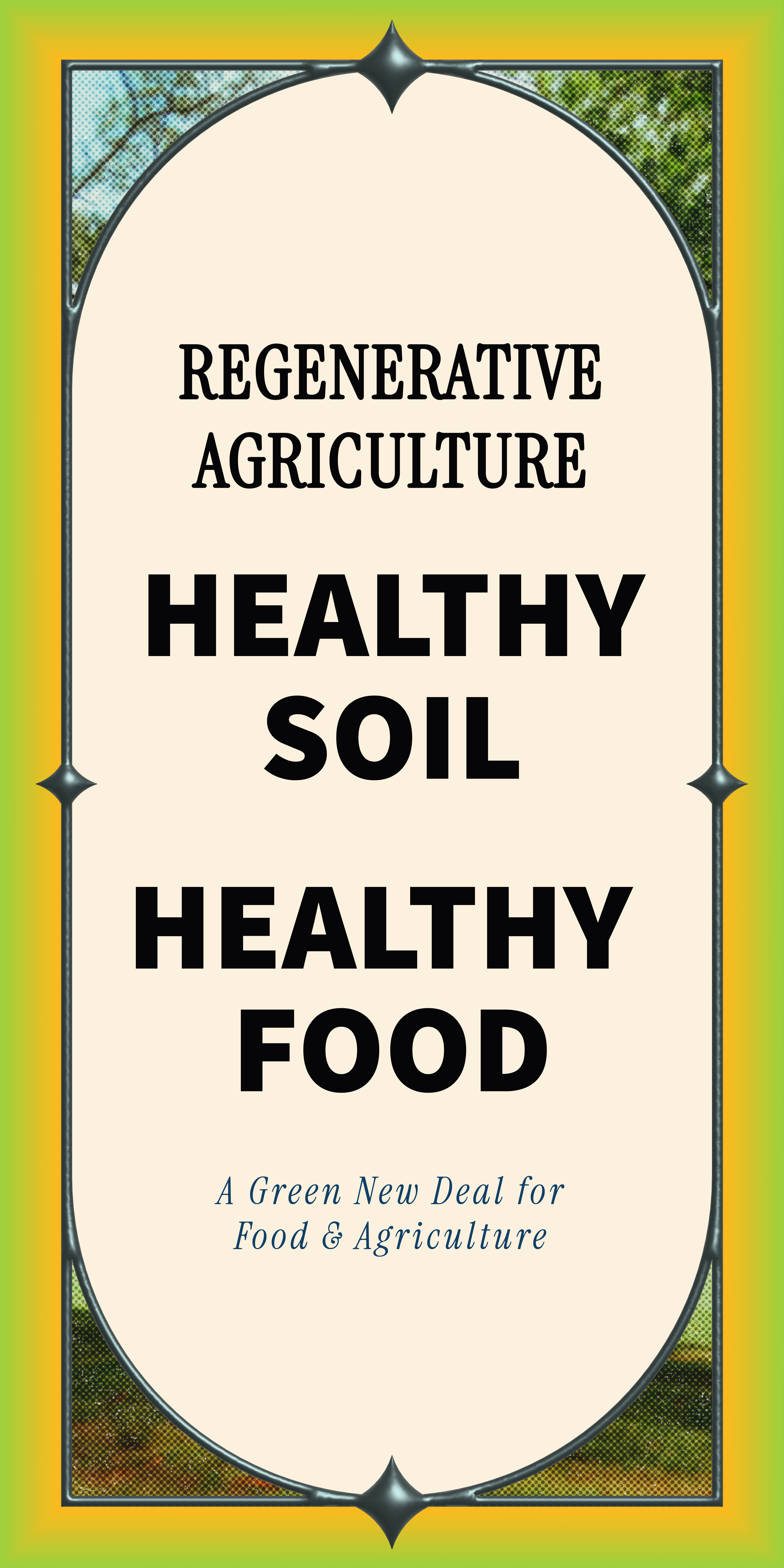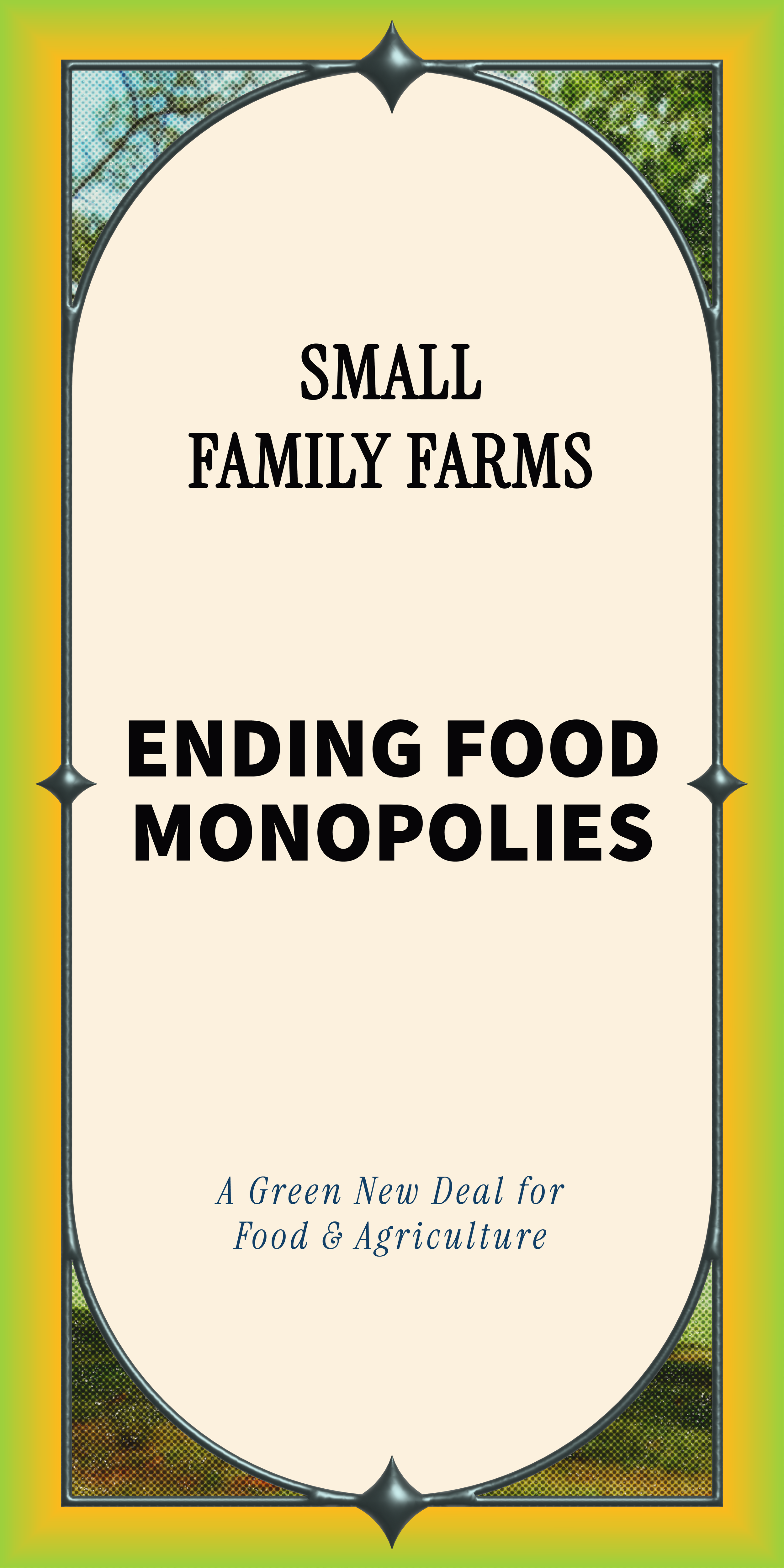It’s an alarming paradox — and an indictment of our society’s blind spots — that in a world of abundant food production, food insecurity persists. A Green New Deal for Agriculture presents an opportunity to address this issue head-on, by rethinking our food production, distribution, and access from top to bottom, and investing in comprehensive, sustainable agricultural and food systems..
By transforming our food system to be sustainable, local, and racially just, we can ensure a steady supply of nutritious food for all communities, especially those with the least access now. Urban farming initiatives, community-supported agriculture, and local farmers markets can bring fresh, healthy food into our cities and towns, bridging the gap between farm and fork.
Welcome to our vision of a Green New Deal for Food and Agriculture.
Picture this: vast expanses of farmland, not just sprouting rows of crops, but also humming with buzzing bees, fluttering butterflies, and rich, biodiverse wildlife. This is no romantic pastoral fantasy — it's the future we can create with a Green New Deal for Agriculture.
For centuries, agriculture has relied on the brute force of industrialization, leaning heavily on synthetic fertilizers, pesticides, and monoculture farming. However, this approach has exacted a heavy toll on our environment, depleting our soils, polluting our waterways, and emitting dangerous greenhouse gasses.
Under the Green New Deal, we will reimagine agriculture, transitioning from industrial, monoculture farming to regenerative agriculture. This will involve practices such as crop rotation, cover cropping, and agroforestry, which not only enrich the soil but also sequester carbon, creating a healthier, more resilient agricultural system.
Imagine a world where small, local farms thrive, and agricultural conglomerates, with their toxins poisoning our food, don't dominate our food systems. In this world, farmers are rewarded not just for the quantity of their yield, but for the quality and sustainability of their practices.
Through the Green New Deal, we can provide support to these small farms, offering subsidies, training, and access to resources, especially investing in communities that have been historically excluded from farming and other forms of food production. By doing so, we not only foster a more diverse and resilient food system but also strengthen and diversify our rural communities.
For most of us, getting fresh produce means driving to the market. But the quality of that market, how far away it is, or even how far away it is depends largely on what neighborhood you live in, with white, wealthier neighborhoods having easy access to healthy food, and with many poorer communities and communities of color having limited — or even no — options for healthy food.
But what if it was as simple as picking a tomato out of your backyard, or walking to a community garden every week for a box of fresh fruits and vegetables? By subsidizing and incentivizing local food growers, we can decrease emissions-costly journeys for healthy food, increasing access to communities that have the least.
The potential of a Green New Deal for Agriculture extends beyond the realms of environmental impact. It's about the intersection of climate justice, food security, animal welfare, and economic stability. It's about cultivating a future where our farms not only feed us but also nourish the planet. The seeds of change have been sown; it's time we nurture them to fruition.
Today, monopolies control our food supply, deciding who can grow food, and what food they can grow. Their priority isn’t feeding people; it’s turning profits.
That’s why so much of our arable land is used on corn that goes to ethanol, while millions go hungry in the US, and still more around the world.
That’s why so many farmers and farm workers can’t even eat the produce they grow and pick.
That’s why markets and restaurants throw away hundreds of millions of pounds of food every day, while millions go hungry.
One of the more revolutionary aspects of the Green New Deal would be upending that power structure and ensuring that humanity grows food not for the pocketbooks of billionaires, but for people who need to eat to survive.





